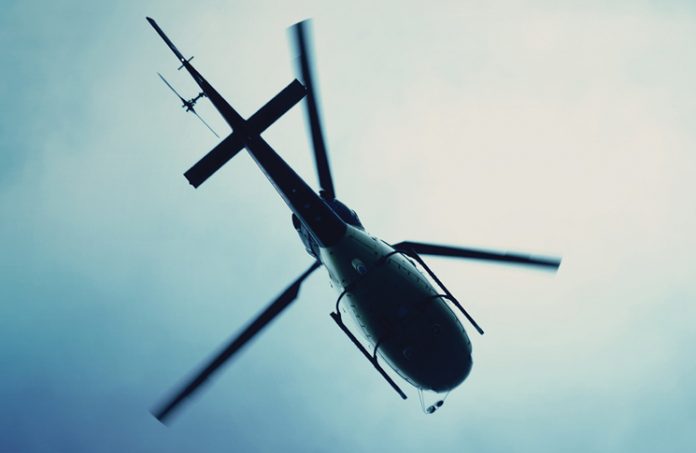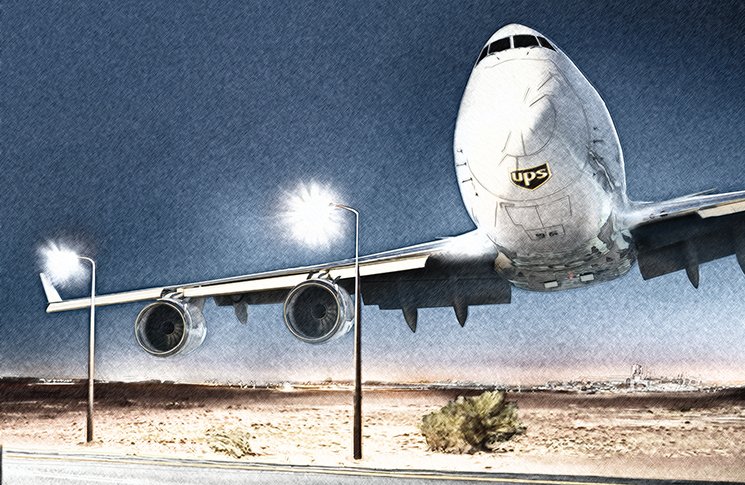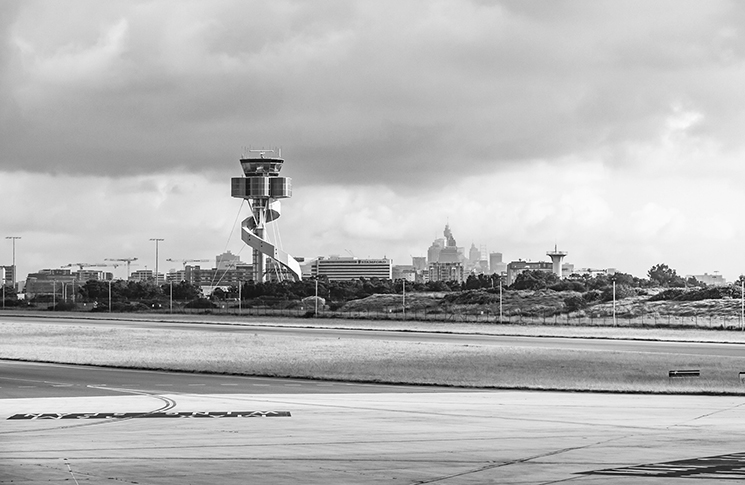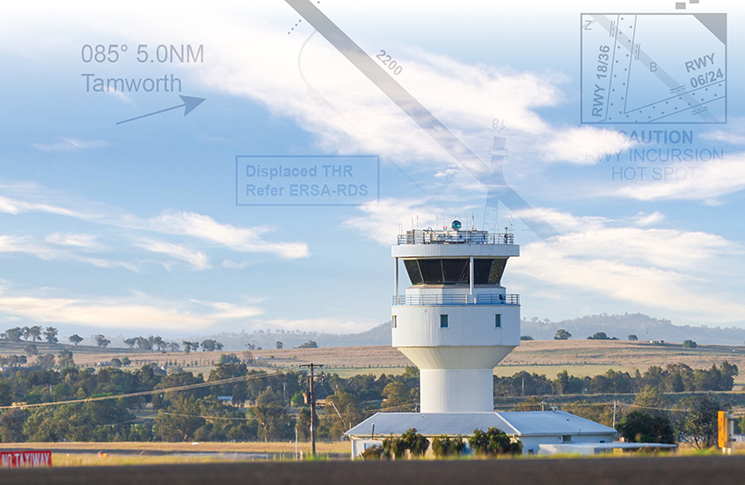Using radio to enhance situational awareness is an essential part of flying safely in shared airspace.
On 18 September 2020, an Extra EA-300 aeroplane, registered VH-EXR, was conducting circuits at Caloundra Airport, Queensland. A Guimbal Cabri G2 helicopter, registered VH-LTO, joined the circuit ahead of VH-EXR and conducted a stop-and-go on the active runway. VH-EXR landed on the runway and collided with the rear of the hovering helicopter during the landing roll, resulting is substantial damage to both aircraft but fortunately no injuries.
You’ve just read the precis of an incident reported by the Australian Transport Safety Bureau (ATSB). And, if you’re a pilot, you are going to hear a lot more about it and hopefully learn from it.
That’s because the incident has been chosen by CASA to be a key part of our new AvSafety seminar series. The topic of the seminars is ‘Operations on and in the vicinity of non-controlled aerodromes’.
Let’s face it – if you are a GA or RAAus pilot, this theme applies to just about every strip you land at – from Wagga Wagga to Gladstone to Wynyard to Busselton.
The ATSB found the pilots of the Extra did not expect the helicopter to join the 1,000-foot circuit pattern and did not assimilate the helicopter pilot’s radio calls. As a result, they were unaware of the helicopter ahead of them in the circuit, until too late.
A complicating factor was the nose-high attitude of the high-performance tail dragger aerobatic machine – this prevented visual identification of the hovering helicopter until immediately before the ground collision, leaving no time for avoiding action.
‘This incident highlights the importance of being aware of the circuit procedures for different types of aircraft,’ the report says. ‘Multiple options are available to helicopter traffic at non-towered airports including the active 1,000-foot circuit pattern. A helicopter performing a stop-and-go will usually require significantly more time to clear the runway compared to an aeroplane performing a touch and go.
‘The accident also illustrates that, even for experienced pilots, visual identification of unknown traffic is difficult. The alerting provided by circuit related radio broadcasts greatly assists the process of sighting traffic that may be a collision risk.’
CASA says an aircraft is in the vicinity of a non-controlled aerodrome if it is within 10 nm of the aerodrome and a height above it that could result in conflict with operations.
The material to be presented during the new round of AvSafety seminars has been developed by Aviation Safety Advisors, Teraya Miller and Craig Peterson.
You really must be on your game listening to radio calls and actually understanding where everyone is and what they’re doing.
Peterson says the case study was chosen for discussion at the seminars because it combines several of the risk factors present at non-controlled aerodromes.
‘They are things like the mix of traffic, dissimilar aircraft types using the same circuit which obviously have different performance characteristics,’ he says.
‘Another factor we’re going to examine is that, at airfields like Caloundra, the experience level of the pilots can be significantly different. The helicopter pilot in this case was quite new to aviation whereas the two pilots in the Extra were very experienced.
‘The helicopter was landing on the runway and slowing down on final, preparing to make a stop-and-go, and the Extra, on the same circuit, hit the helicopter from behind, not expecting it to be on the same runway.
‘There was also some confusion because there was a third aircraft departing on the active runway and making radio calls. It’s entirely possible that the Extra pilot thought the aircraft that was calling into the runway, was the other aircraft that was now clear, and lost situational awareness of where the helicopter was.’
Both aircraft suffered substantial damage but no-one was hurt in the collision.
‘We’re going to get that big mix of traffic disparity and pilot experience disparity,’ he says.
‘When you throw the third aircraft into the mix, which happened in this case, you can see it’s hard to maintain good situational awareness in that dynamic environment around a non-controlled aerodrome.
‘You really must be on your game listening to radio calls and actually understanding where everyone is and what they’re doing. If you’re in any doubt at any stage about what another aircraft’s intentions are, you should call them and ask.’
Teraya Miller, co-developer of the seminar series, says the concept of ‘alerted see and avoid’ will be discussed at the seminars.
‘If you’re just scanning, looking outside your aircraft, you don’t always see other aircraft because the eyes have limitations,’ she says.
‘When you add radio calls – making the situation into alerted see and avoid – people are 8 times more likely to see another aircraft, once alerted to its presence.
‘If the aircraft says it is turning base, then you are looking at a particular area, on a particular side of the airport, at a particular height, and you are more likely to be able to see that aircraft and then avoid it.
‘So we are really stressing the importance of radio calls – they produce alerted see and avoid and improve situational awareness.’
At the seminar she will discuss which radio calls are recommended at non-controlled aerodromes.
‘The rules are written to say you must make a radio call if there is a potential for conflict, but what does that mean?’ she says.
‘We are also trying to encourage people to think about why they’re giving a call at a particular position.
‘For instance, why would you give a call at the beginning of downwind when you’re not actually there? Pilots should make their radio calls relevant to where they are in the circuit.
‘We’re finding people getting closer and closer together and there’s the potential for a catastrophic event to occur – a near miss or a mid-air – and we don’t want that to occur.
‘If we do good radio calls and pilots are aware of each other, then we are more likely to have good situational awareness.
‘We want people to think about the sensibleness of their radio call – how is it communicated to others and what information is being put out?
The new series of AvSafety seminars are beginning in spring. Look out for one being held in your area.









Of all the available area on the airfield why would any helicopter land, or do a touch and go, on a runway?
When I worked at Tullamarine, the Ansett helicopter (VH-AND) operated the City (Yarra River helipad) “air taxi operation” from and return from the Ansett terminal Bay 10 without ever being anywhere near the runways. Occasionally it air-taxied perhaps 100 metres from Gate 10 to be clear of parked aircraft at the adjacent gate prior lifting off and away.
In training, you need to be exposed to a variety of situations. It’s a very different perspective approaching a large ashfalt strip than a patch of grass or a helipad.
After 20 years of ATC at Bankstown (25 years ago), I know that your average GA pilot (not the professional GA fraternity) does not absorb the information provided by radio from the professionals. I can imagine that radio transmissions between two non-professionals, especially the RAA pilot, lacks a certain amount of precision.
Maybe you need to read it again. No RAA pilot involved !
At Cessnock airport, I was rotating in a Warrior, when a helicopter ,airborne,crossed the end of the runway and flew downwind adjacent to my runway.I half aborted but had to continue because of my proximity to end of runway..It was my third circuit, so that involved a number of radio calls to anyone listening.
What was a light helicopter doing using a runway in the first place? It is not one of these large machines that require run on landings.
Further, ERSA stipulates that all aircraft taking off from this AD (except touch and go, which the helicopter’s operation was not) are required to commence from the end of the runway. So the helicopter should have landed, vacated the runway immediately and then repositioned to the end of the runway. It was perfectly reasonable expectation on the part of the fixed wing pilot to not have a helicopter stopped on the runway ahead.
You are expecting a lot of a pilot flying a pocket rocket who is in the high work load stage of flight to assimilate that the helo is on final, probably back at 50kts and slowing, and will be stationary on the runway for probably minimum of 30secs before starting the transition to take-off. Similarly you are asking the helicopter instructor who is watching an early time student in the last mile of flight to track the base turns and rates of closure of following traffic. The two senior pilots in both these aircraft are operating at very different time signatures. Their expectations of each others acft performance is likely to be vastly different to reality.
Radio calls; “10DME” or an estimate for o’head can be vastly different to track miles to run or time at the runway threshold. A downwind call is made, how long is that to the threshold? Was it made late crosswind turning d’wind or late d’wind about to turn base, at 80kts or 160kts, is it a square turn for base or a mil style constant rate of turn to short final? Too many variables. You expect low time, student or part time pilots to do what experienced multi-crew pilots struggle with.
You need more rigid scripts in the circuit for pilots to follow – this supports situational awareness. Make it easier for them and consistent from AD to AD.
Short sharp accurate transmissions “right downwind 35, threshold 3 minutes”, “right base 35”.
And yeah, what Bob said!!